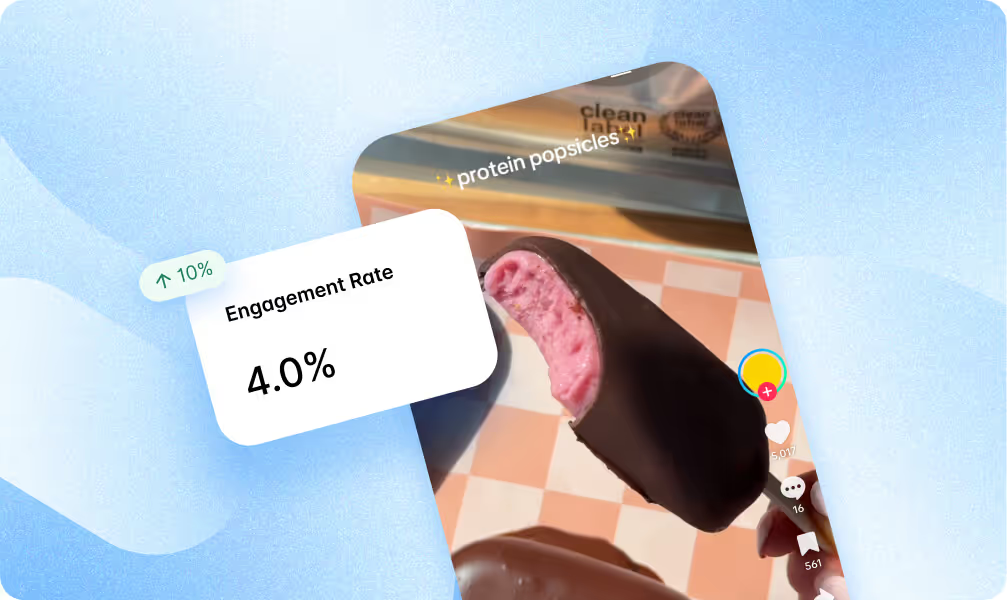2025 TikTok Benchmark Report
Learn how brands are building momentum on TikTok in 2025.
Download the Benchmarks
TikTok remains a vital part of the social landscape, offering brands a powerful way to connect through creativity, culture, and entertainment. With KPIs constantly in flux, it is important to look at snapshots of benchmarks to understand what success looks like on the platform right now. This report highlights how top brands are performing and where opportunities exist to create content that resonates and drives results.
Key Takeaways: 2025 TikTok Benchmark Report
Viewership is trending up. Despite uncertainty around TikTok’s future in the United States, viewership continues to grow. Over the past six months, reach grew +25%, shares +31%, and views +26%, signaling stronger audience interaction.
Follower growth slows, indicating shift in behavior. Brands grew at an average rate of +3.4% per month, the slowest rate since tracking began. The slowdown could reflect changing user behavior and a move away from following accounts.
Most users don't finish videos. On average, only 10% of users watch a full TikTok. Viewers typically consume about 30% of a video, suggesting shorter, higher-impact content may better capture attention.
TikTok
YouTube
Average TikTok Performance Across All Industries
On average, brands on TikTok post six times a week and reach a follower count of nearly 500,000. Performance trends point to strong interaction when content is entertaining and well-timed. Brands are posting frequently and making entertaining content to surface in the fast-moving infinite scroll.
Download the full TikTok benchmark report to access all of the metrics, all broken down by brand size and industry.
Average TikTok Performance By Industry
Performance on TikTok varies widely by industry, with each showing different strengths. Publishing brands lead in both engagement rate (5.2%) and Entertainment Score (4.4), while industries like Beauty and Luxury perform well with more moderate posting frequency. Industry benchmarks give valuable context for how brands can shape content strategy based on what’s resonating with competitors.
Download the full TikTok benchmark report to access the above metrics and more.
Top Brands on TikTok by Engagement Rate
These standout brands represent the top performers across our TikTok sample. Each one drives strong interaction through content that resonates, entertains, and encourages viewers to take action.

BBC Earth earns top TikTok engagement by cutting wildlife moments into tight clips with a first-second hook. It uses its extensive archival footage with educational captions or expert commentary to spark curiosity.

Skinfix keeps TikTok viewers hooked with quick, ingredient-focused skincare tips paired with satisfying product demos. Its videos strike the right balance between approachable education and product, creating a scroll-stopping feed that feels both expert and engaging.
Dash Social pulled a sample of global companies across TikTok (n=970), Instagram (n=2,967), and YouTube (n=630) analyzing their activity between January 1, 2025 to June 30, 2025 to determine average performance against a predetermined set of KPIs. These benchmarks include organic, boosted and promoted content but exclude paid ads. They apply to handles with at least 1K followers, covering both customers and non-customers.



